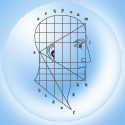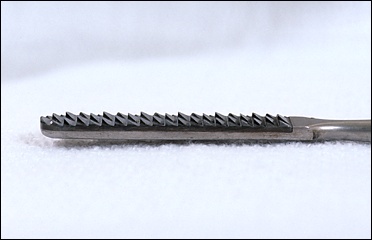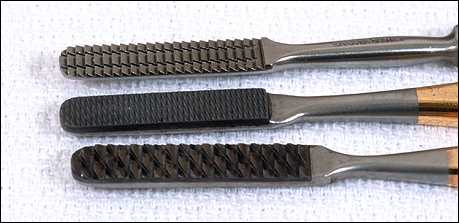 The rasp that we use on
the bone looks like a
wood file. You just put it on the bone to be removed, and file back and
forth until you've taken enough bone. Above, we see the business end of a
common nasal rasp.
The rasp that we use on
the bone looks like a
wood file. You just put it on the bone to be removed, and file back and
forth until you've taken enough bone. Above, we see the business end of a
common nasal rasp.
There are "pusher" rasps and
"puller" rasps. A "puller" rasp has its teeth oriented
so that it cuts bone as the rasp
is pulled out of the nose, and a "pusher" rasp has it's teeth
oriented so that it cuts bone as it is being pushed up along the dorsum of the
nose toward the top of the nose. The rasp pictured above is a pusher rasp.
I like pushers because I think they're easier to use accurately.
|














